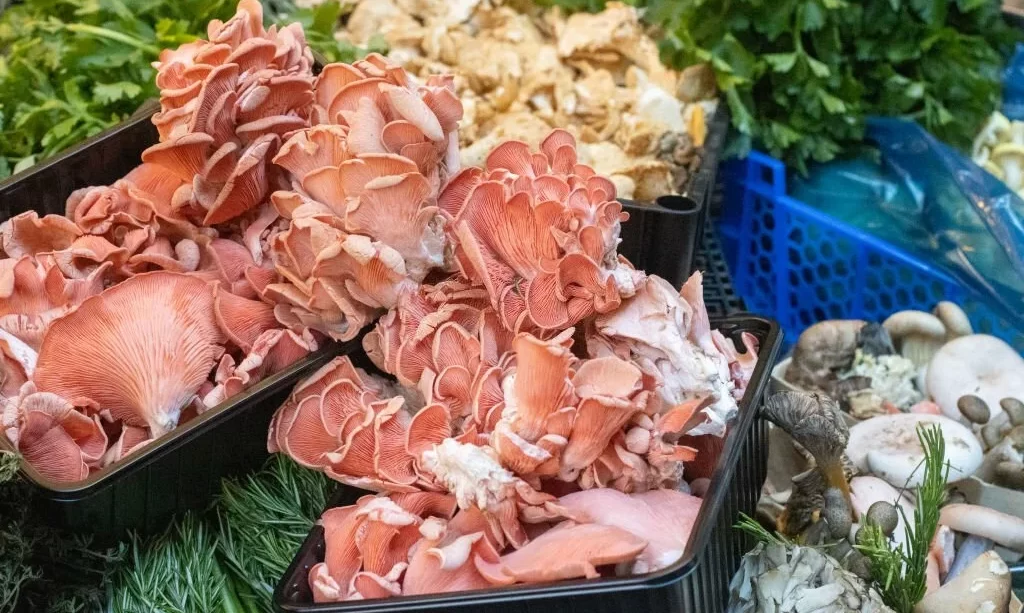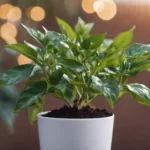Pink oyster mushrooms are a visually striking and delicious variety of edible fungi known for their vibrant pink color and unique, savory flavor. As with many mushroom varieties, the timing of the harvest is crucial. Harvesting pink oyster mushrooms at the right moment ensures the best texture, flavor, and culinary versatility. This article aims to guide cultivators and enthusiasts through the key aspects of identifying, growing, and optimally harvesting pink oyster mushrooms.
Identifying Pink Oyster Mushrooms
Pink oyster mushrooms, scientifically known as Pleurotus djamor, are easily distinguishable from other mushroom varieties. They are characterized by their bright pink color, which can range from a soft, pastel hue to a deep, vibrant pink. These mushrooms typically grow in clusters with broad, fan-like caps. The size of the caps can vary, but they generally span between two to six inches in diameter. Unlike some other oyster mushroom varieties, pink oysters have short stems and a more pronounced cap.
Optimal Growing Conditions for Pink Oyster Mushrooms
For successful cultivation, understanding and maintaining the ideal growing conditions for pink oyster mushrooms is essential. These fungi thrive in warm, humid environments with temperatures typically between 65-75°F (18-24°C). They are usually grown on substrates such as straw, hardwood sawdust, or agricultural byproducts.
The growth rate and the time to harvest can be significantly influenced by these environmental factors. Maintaining consistent temperature and humidity levels is key to encouraging healthy growth. Inadequate conditions can lead to delayed growth or poor-quality mushrooms.
Signs of Maturity in Pink Oyster Mushrooms
Recognizing when pink oyster mushrooms are ready to be harvested involves observing several key indicators. As the mushrooms mature, their caps will unfold and flatten out. Initially, the edges of the mushroom caps are rolled inward, but as they reach maturity, they begin to uncurl. The color of the mushrooms can also be a sign of maturity, with the pink hue becoming more pronounced as they age.
It’s important to monitor the mushrooms closely as they approach maturity, as the window for optimal harvesting can be brief. Over-mature mushrooms may lose their vibrant color, becoming paler and less appealing, which can also affect their texture and flavor.
The Right Time to Harvest
Determining the best time to harvest pink oyster mushrooms is essential for capturing their optimal flavor and texture. The ideal time is typically when the edges of the caps are still slightly curled downwards but before they have fully flattened out or begun to invert. At this stage, the mushrooms are at their peak in terms of texture and savory flavor. If left to grow for too long, they can become tough and lose some of their distinctive taste.
In terms of the mushroom’s life cycle, this harvesting point usually occurs approximately 5 to 7 days after the first pins (small mushroom buds) appear, although this can vary based on growing conditions. The mushrooms grow rapidly, so daily monitoring is recommended as they approach maturity.
Harvesting Technique for Pink Oyster Mushrooms
The harvesting of pink oyster mushrooms requires a gentle touch to ensure the integrity of both the mushrooms and the mycelium for future growth. Here’s a step-by-step guide:
- Gentle Twist: Grasp the base of the mushroom cluster and gently twist it off from the substrate. Avoid pulling or yanking, as this can damage the mycelium.
- Using a Knife: Alternatively, you can use a sharp knife to cut the mushroom at its base, close to the substrate. Ensure the knife is clean to avoid contamination.
- Whole Clusters: It’s generally best to harvest entire clusters of pink oyster mushrooms rather than individual caps, as this promotes better regrowth.
- Hygiene: Maintain cleanliness during the harvesting process. Clean hands and tools prevent the introduction of contaminants to the growing area.
Post-Harvest Handling and Storage
Once harvested, proper handling and storage are crucial to maintaining the quality of pink oyster mushrooms. They should be consumed or processed relatively quickly, as they don’t have a long shelf life. Here are some tips:
- Immediate Use: Pink oyster mushrooms are best enjoyed fresh, ideally within a few hours of harvesting. Their fresh, meaty texture and flavor are most pronounced when they are fresh.
- Refrigeration: If immediate use isn’t possible, store the mushrooms in the refrigerator. Place them in a paper bag to allow for some air circulation. They can typically be stored for up to a week.
- Drying: For longer storage, pink oyster mushrooms can be dried. Use a food dehydrator or air-dry them in a warm, well-ventilated area. Dried mushrooms can be rehydrated for later use in cooking.
- Cleaning: Clean the mushrooms gently with a brush or a damp cloth. Washing them under water is not recommended as they can absorb moisture and become slimy.
Common Mistakes to Avoid in Harvesting
Successful harvesting of pink oyster mushrooms not only involves knowing when and how to pick them but also being aware of common errors that can affect their quality. Here are some key mistakes to avoid:
- Delaying Harvest: Waiting too long to harvest can lead to over-mature mushrooms, which are less flavorful and have a tougher texture. Keep a close eye on the mushrooms as they grow and harvest them promptly when they reach maturity.
- Rough Handling: Pink oyster mushrooms are delicate. Rough handling during harvesting can bruise the mushrooms, affecting their appearance and shelf life. Always handle them gently, whether you’re twisting them off by hand or cutting them with a knife.
- Improper Storage: Storing pink oyster mushrooms in airtight containers or plastic bags can cause them to become slimy and spoil quickly. Use breathable storage like paper bags and consume them within a week.
- Over-Washing: Avoid washing pink oyster mushrooms with water as they absorb moisture easily, which can negatively impact their texture and taste. Instead, gently brush off any substrate or debris.
Conclusion
Harvesting pink oyster mushrooms at the right time and with the right technique is essential for enjoying their unique flavor and texture to the fullest. By understanding the signs of maturity, employing a gentle harvesting method, and following proper post-harvest handling and storage practices, cultivators can ensure the best quality of their mushroom crop.
Pink oyster mushrooms offer a delightful culinary experience, whether savored fresh or incorporated into various dishes. Their striking appearance and rich flavor make them a favorite among mushroom enthusiasts. By avoiding common harvesting mistakes and adhering to best practices, gardeners and cultivators can enjoy a bountiful and rewarding harvest of these beautiful and tasty fungi.




